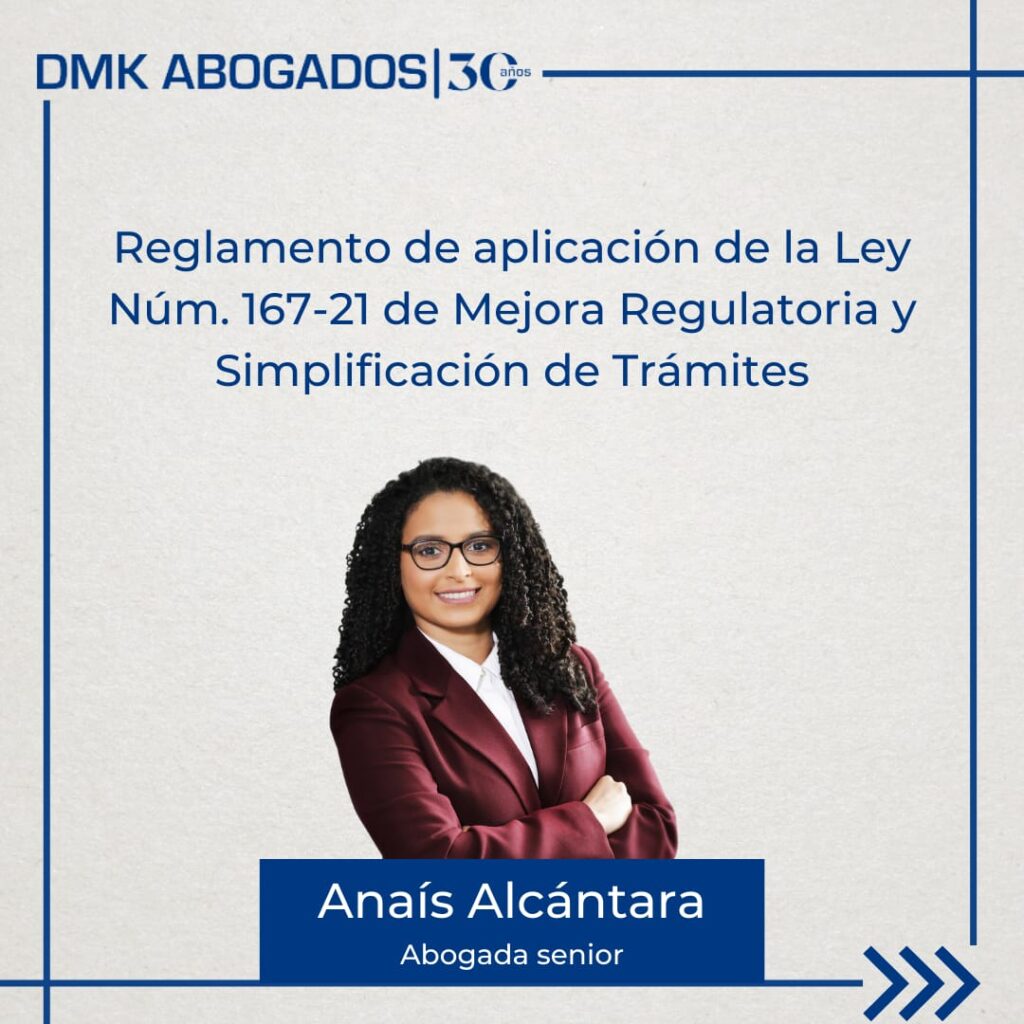
On August 24, 2022, President Luis Abinader issued Decree No. 486-22 containing the Regulations for the application of Law No. 167-21 on Regulatory Improvement and Paperwork Reduction aimed at streamlining Public Administration procedures by reducing costs, requirements and deadlines that currently govern the provision of services.
The essence of this regulation lies in its own title since it is aimed at improving and simplifying administrative services and procedures. To this end, among other things, it stipulates the obligation of the entities and bodies that make up the Public Administration to prepare and publicize the regulations that they intend to create, modify and / or eliminate, in a transparent and predictable manner, that allows the public to become aware of this work.
Likewise, directly under Law No. 167-21, it is now mandatory to create conditions to critically and systematically identify and analyze the positive or negative effects that a regulatory proposal or a regulation in force could entail in order to issue the legal norm best suited to the particular situation that is intended to be regulated. For this purpose, the law envisages that the Ministry of Public Administration create methodology and instructions for similar regulations, but two general systems of evaluation of regulatory effects are also enshrined, taking into account the social impact of the regulation or the temporality with which it is analyzed.
Regarding the regulatory analysis system in response to social impact, a distinction is made between the Complex Regulatory Impact Analysis and the Simplified Regulatory Impact Analysis, where the use of one or the other would correspond if the regulation in question has a significant social and economic impact, according to the criteria determined by the Ministry of Public Administration, in coordination with institutions and sectors of the corresponding area.
In relation to temporality, we distinguish: a) Ex ante Regulatory Impact Analysis as a mechanism to systematically evaluate public policy problems beforehand and estimate the potential consequences of the regulatory or non-regulatory proposals to be created to address these problems; and b) Ex post Regulatory Impact Analysis as a tool to evaluate the performance and quality of current regulations to determine if the desired objectives are being met efficiently, or if there were unplanned consequences.
For all this, the Public Administration’s entities and bodies are in charge of carrying out a periodic analysis of regulatory impact at least every 5 years after the administrative procedure or service regulation in question comes into force.
The aim of simplifying administrative procedures is an integral part of the entire Regulation, since the continuous optimization of administrative procedures, services and procedures is the purpose that justifies the adoption of this legal norm. In that light, the public’s right to be integrated into the discussion and preparation of each regulation is enshrined, regardless of whether or not they are affected by the regulatory proposal, in accordance with the provisions of Law 200-04 General Access to Public Information and Law 107-13 on the Public’s Rights in their Relations with the Administration and Administrative Procedure.
Finally, the Ministry of Public Administration is appointed as the coordinating and supervisory body for regulatory improvement, also responsible for managing the Single Regulatory Improvement Registry, a new official platform aimed at keeping track of the list of administrative regulations in force, so that the public has direct and immediate access to these rules at all times.
Source:
DMK Abogados
